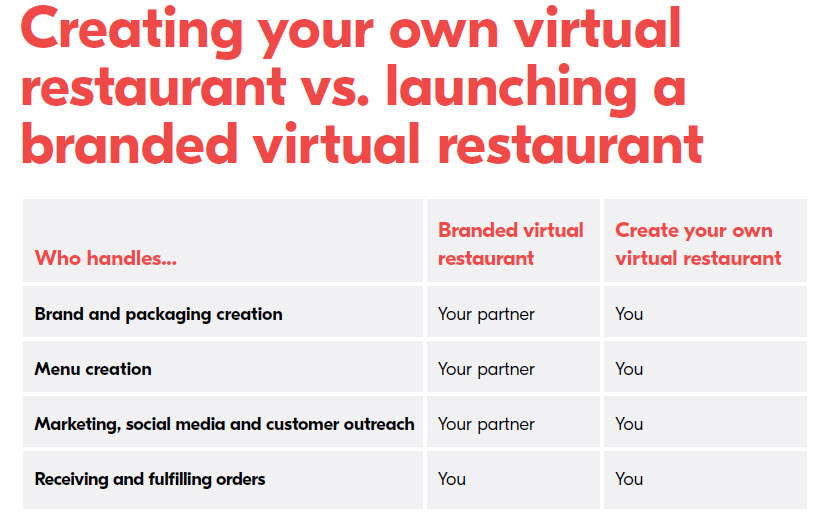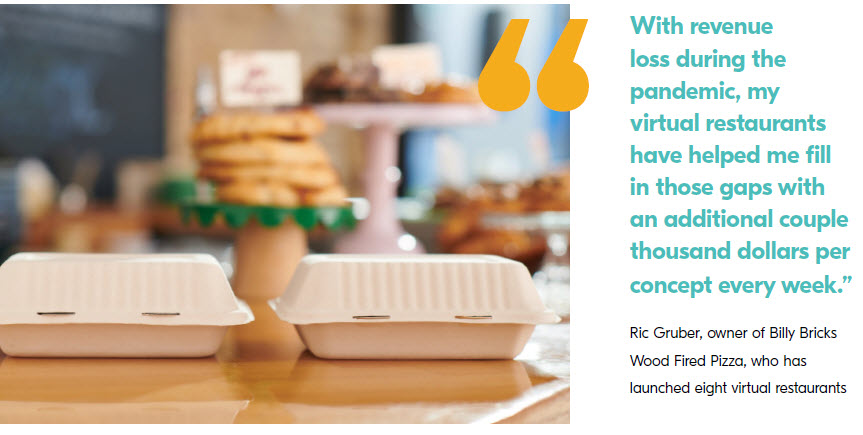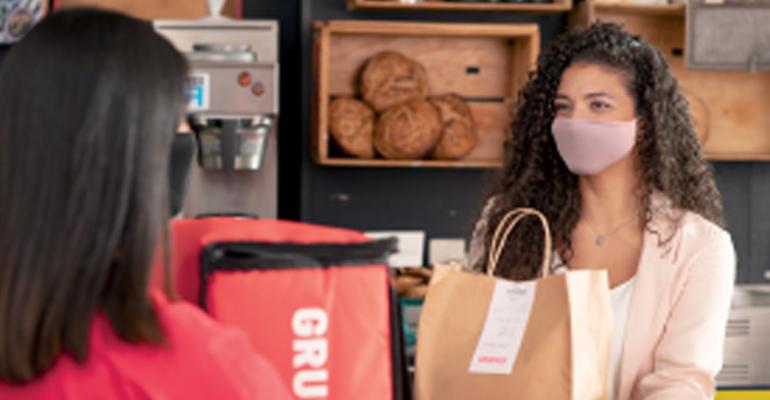Sponsored by Grubhub
No matter where you’re starting from or where you want to go, there’s a virtual restaurant concept that can help you get there. But that doesn’t mean that every concept is one-size-fits-all. Be sure to think through the differences between creating your own virtual restaurant and launching a branded virtual restaurant to find the right fit for your business.
For example, most of the early experiments in this space were created by independent restaurateurs and launched out of their existing brick-and-mortar space. Although many restaurateurs have done very well with them, creating your own virtual restaurant does come with challenges:
But branded virtual restaurants can offer a quicker, easier,
“turnkey” way to get in the game. Instead of creating your own virtual restaurant from scratch, you can use an established, nationally marketed, ready-to-launch pre-built virtual restaurant.
Longer timelines: It can take a long time and a lot of effort to develop a new virtual restaurant concept and menu from scratch.
Higher startup costs: From developing a new concept and menu to branding, packaging, marketing and promotion, the costs of creating your own virtual restaurant can add up quickly.
Limited exposure: A brand-new virtual restaurant concept with no established brand recognition or loyalty can take a long time to gain traction online. It could be a while before you build up a customer base and start seeing a return on your investment.
For all these reasons, as the virtual restaurant trend continues to evolve, many in the industry are exploring other possibilities.
"In my estimation, there are 15,000–20,000 virtual brands in this country already, but they are single units. And that poor restaurateur is going to have to try to work out how to do packaging, social media and marketing, all for one or two units.”Robert Earl, Founder of Earl Enterprises and Virtual Dining Concepts and partner of Grubhub’s branded virtual restaurants portfolio
COMMON CHALLENGES OF CREATING YOUR OWN VIRTUAL RESTAURANT
Grubhub has been right at the center of the virtual restaurant revolution, and we’ve seen lots of different approaches from both independent restaurateurs and major established brands.
Some virtual restaurants created by independent restaurateurs do quite well. But many do require more time, effort, and investment to get off the ground. Common challenges include:
- Lack of initial public awareness of an unknown, unfamiliar brand, making it hard for the new concept stand out
- Lots of early experimentation needed to create a menu and identify the right dishes and packaging that will hold up well for delivery
- Extra time and expense needed to produce and maintain the branding Example: Investing in professional photos and adding to your online menu
- Significant marketing costs needed to draw new customers

Branded virtual restaurants: a simpler, turnkey alternative
Like most virtual restaurants, branded virtual restaurants can be run from your existing brick-and-mortar restaurant, using your existing kitchen, ingredients, and staff. But branded virtual restaurants can offer a quicker, easier, “turnkey” way to get in the game. Instead of creating your own virtual restaurant from scratch, you can use an established, nationally marketed, ready-to-launch pre-built virtual restaurant.
Branded virtual restaurants have quickly become the top choice for independent restaurateurs looking to launch a virtual restaurant, for several reasons:
- They’re turnkey: For restaurateurs who want to jump into virtual restaurants and quickly inject a new revenue stream into their business, branded virtual restaurants provide an instant, turnkey solution. The concept, packaging, marketing, and more are already fully developed. You just order the resources, prepare the food, and start taking orders.
- They’re fully established: When you partner with an established branded virtual restaurant, you’re launching a mature, fully developed concept and menu, with branding and packaging expertly crafted by leading industry professionals. It all just comes with the package, without having to do any of it on your own.
- They’re popular: Branded virtual restaurants come with national marketing campaigns, often backed by well-known celebrities and respected restaurant groups like Lettuce Entertain You. Customers in your market are likely already aware of these celebrities and brands, removing the biggest hurdle to making a new virtual restaurant stick.
- They work: Independent restaurateurs on Grubhub working with branded virtual restaurants have seen average incremental order increases of more than 20%—with some brands seeing increases over 50%. Among customers placing orders with branded virtual restaurants, 40-95% are net-new customers for the restaurateur.


For all these reasons, branded virtual restaurants have quickly emerged as the wave of the future for the restaurant industry. Analysts have pegged virtual restaurants in general, and branded virtual restaurants in particular, as one of the most important growth areas in the coming years. Major financial firms are already making serious investments in this space. And some of the fastest-growing restaurant groups, like Virtual Dining Concepts, have made bringing branded concepts to independent operators a central pillar in their business strategy.

